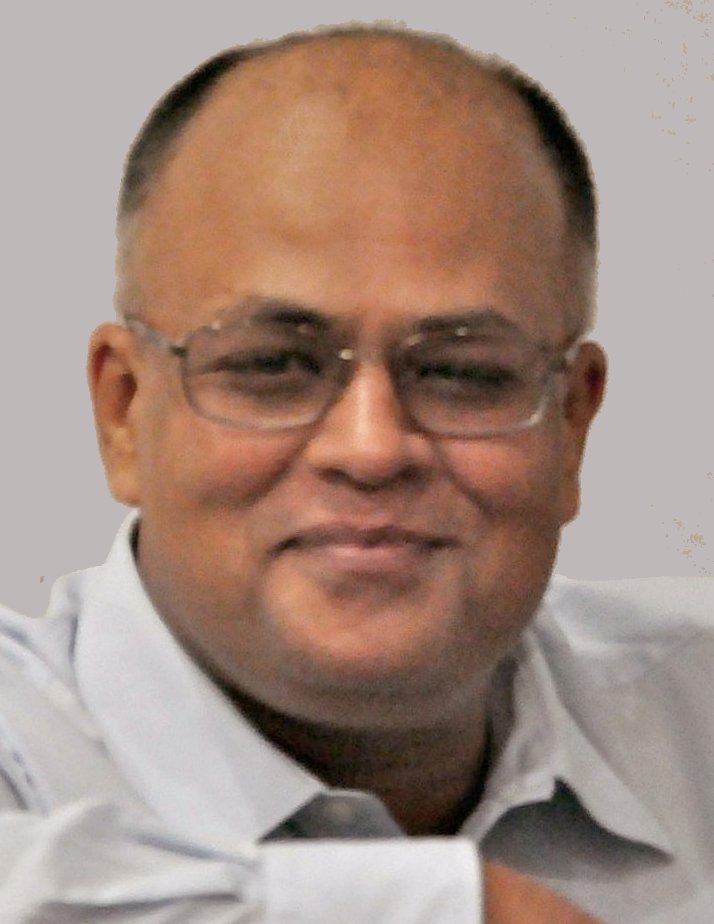
B. J. RAM RAO


|
Hi, I am Baji Jagannatha Ram Rao. I was born and educated in Bombay (which, since 1996 is called Mumbai). My first class BE in electronics & communications engineering in 1980, resulted in a fulfilling thirty-two year tech. career. Skills picked up, saw me as a computer professional, consultant, electronics engineer and software engineer, systems analyst, software designer and developer, tech support specialist, coach and teacher, public speaker and presenter. Post 1981, I worked in some of India's large global IT companies and engineering giants. I was chief operating officer, of a couple of Bombay Stock-Exchange listed software companies and founded and ran a medical software startup in Mumbai. Was lucky to serve companies, such as IBM New York; Hewlett-Packard Washington; Personal CAD Systems, California; Bell-Northern Research Canada; Europe Container Terminus, Netherlands; Vattenfall Group, Sweden; Matsushita Systems Engg, Japan; Medtronic Physio-Controls, USA; Novellus, USA; FIC Taiwan/Canon Camera and EEC Taiwan.
For hobbies, I love to write and blog about and sketch motor-vehicles,
shoot photos and videos and build 3D software models.
I am an aircraft aficionado and
an automobile enthusiast. I live in Chembur, Mumbai. |
|
The Intel 8080, the first real microprocessor that ushered in the microcomputer revolution was announced in April 1974. That year, I was an Inter Sc. Student at SIES, Sion, Mumbai. The following summer in 1975, I joined engineering college. I was at Manipal
Institute of Technology from 1975 to 1980.
Back then the institute was under the University of Mysore.
That year, in 1975, Paul Allen and Bill Gates wrote their BASIC interpreter for
the MITS Altair, the first hobby microcomputer and founded what would
become Microsoft. Back in the late seventies, computer architecture was implemented with TTL chips and MSI logic. As an engineering student at BARC during the Diwali-1976 holidays, I learned to program in assembly language on an ECIL 16-bit TDC-316 mini. The TDC-316 was inspired by the PDP-11 from Digital Equipment Corp. (DEC),Maynard, Massachusetts. In 1976 DEC announced their first 32-bit supermini: the VAX series. Suddenly the current 16-bit machines were outdated. Data-General immediately launched their own 32-bit effort to beat DEC to market. They called it the “Fountainhead Project”. However, two years later in 1978, the VAX 11/780 was released. Fountainhead proj. mgmt. had failed to beat DEC to market. DG then killed Fountainhead and launched their “Eagle Project” a crash 32-bit effort based on the Eclipse. Tracy Kidder's 1981 book, “The Soul Of A New Machine” described these travails. The book won the Pulitzer. The DG Eclipse MV/8000 was finally delivered in 1980, the year I graduated. Going back, the September 1977 issue of the Scientific American, was an eye-opener.
I convinced my college librarian to let me borrow the library reference
copy long enough to photocopy it.
Each page to be photocopied was mounted on an easel.
Then the photographer would charge a selenium-coated photo-receptor
plate with static electricity.
He would then place the plate into his bellows-type view camera and
photograph (shoot) the page.
The plate with an electrostatic image would then be placed in an
aluminum box and dusted with fine black toner powder.
The toner would stick forming an image on the plate, which would then
be placed in a “fixer” along with the paper.
A heat-fixing process would cause the toner to adhere to the paper. Using this wonderful machine, I copied the current Sept.’77 issue of the Scientific American. That photocopy marked a watershed in my engineering ambitions. It inspired me to build a career on the microcomputer frontier. Computer
design has
made great strides since the Intel 8080. An
ever-increasing amount of functionality is integrated in-silicon.
CPU-design battles are now fought with large gate count, IP-based,
bus-intensive system-on-chips (SoC), designed using SystemVerilog. The essential spirit of the high-tech industry, the feverish pace, the mystique, the go-for-broke approach to business continues, as the industry pursues mind-bending technological innovations with new generations pouring out of the engineering colleges. |
|
"There is hardly anything in the world that somebody cannot worsen a little, sell a little cheaper and rightfully prey on people who consider price only.
"It's unwise to pay too much, but it's self-defeating to pay too little. The common law of business balance prohibits paying a little and getting a lot. It cannot be done. If you deal with the lowest bidder, it is sensible to put something away for the risk you run. And if you do that, you will have enough to pay for something better." John Ruskin (1819..1900) Philosopher, Author
|
Just think…
We humans are
social beings, born unwittingly as the result of others' actions.
Our daily survival depends on other human beings. Our every living
moment benefits from others' activities.
The only way to be
happy, alleviate
anxiety, doubt and disappointment
is:
for us to have a genuine
concern for others and
strive for happy relationships.
| देख ले, आँखों में आँखें डाल, | Look (at life), straight in the eye |
| सीख ले, हर पल में जीना यार, | Learn, to live in every moment |
| सोच ले, जीवन के पल हैं चार, | Think: Life is barely four moments long |
| याद रख, मरना है एक बार | Remember: we must die only once |
| मरने से पहले जीना, सीख ले | Before you die, learn to live |